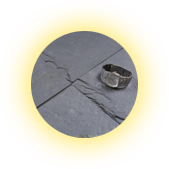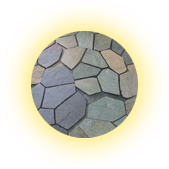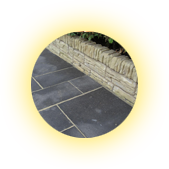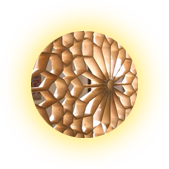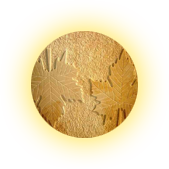
SEMI PRECIOUS GEMSTONES : Semi Precious Gemstones have been placed into the categories of "precious stones" and "semi precious stones" since the mid-1800s. The term "precious stone" was reserved for four types of gems: diamond, ruby, sapphire and emerald. All other gemstones were placed in the "semi precious stone" category.
TYPES OF SEMI PRECIOUS STONES
Agate, Amber, Amethyst, Malachite, Tiger Eye, Rose Quartz, Aquamarine, Aventurine, Chalcedony, Chrysocolla, Chrysoprase, Citrine, Garnet, Hematite, Jade, Jasper, Jet, Kunzite, Lapis Lazuli, Malachite, Moonstone, Obsidian, Onyx, Peridot, Rhodonite, Sunstone, Tiger Eye, Tanzanite, Topaz, Turquoise, Tourmaline
| Amazonite |
| Amazonite is a green microcline feldspar. It is named after the Amazon River of South America, where the first commercial deposits were found. The stones shown here are a light green Amazonite that was mined in Mozambique |
|
 |
| Lepidolite |
| Lepidolite is a variety of mica that occurs in a spectrum of colors that range from pink to deep lavender. The stones shown here are tumbled quartz pebbles that have enough lepidolite inclusions to yield pink and lavender gemstones. |
|
 |
| Apache Tears |
| Apache Tears are round nodules of obsidian that polish to a beautiful jet black color. If you hold them up to the light you will see that they are a translucent to transparent glass. These polished Apache Tears were produced from a material found in Arizona (USA) |
|
 |
| Lilac Amethyst |
| Amethyst is a purple variety of crystalline quartz that can be transparent through translucent. When it has a soft purple color it is often called "lilac amethyst". The stones shown here were produced from material mined in South Africa |
|
 |
| Apricot Agate |
| Apricot Agate is a banded agate that is named for its apricot pink or orange color. It is a beautiful material with bands of whites, creams, yellows, oranges and pinks. The stones shown here were produced from agate mined in Botswana (Africa)/td> |
|
 |
| Lodestone |
| Lodestone has amazed people for thousands of years because it is a natural magnet. When suspended on a string, it will orient itself with Earth's magnetic field. It has a silver metallic luster and is a variety of the iron ore magnetite. These specimens were found in the United States. |
|
 |
| Banded Amethys |
| Amethyst is the name given to transparent to translucent purple quartz. It often forms in alternating bands with white to clear quartz. The resulting material is called Banded Amethyst or sometimes Chevron Amethyst. The Banded Amethyst used to produce these stones was mined in Namibia (Africa) |
|
 |
| Malachite |
| Malachite is a green copper carbonate mineral. It often displays swirled and banded patterns in shades of light through dark green. It is a very heavy material because of its high copper content. These stones were produced from malachite mined in Zaire (Africa) |
|
 |
| Bloodstone |
| Bloodstone, also known as heliotrope, is a green jasper splashed with small drops of red. The red drops remind many people of blood and that is the source of the name Bloodstone. It has been a popular stone since Biblical times. The Bloodstone shown here was produced from material mined in India |
|
 |
| Mookaite |
| Mookaite is silicified radiolarian siltstone that is found in Western Australia. Many specimens of Mookaite can accept a very high polish. It is widely known for its spectacular contrasting color patterns of yellows, creams, reds and maroons |
|
 |
| Blue Chalcedony |
| There are very few blue gemstones. Occasionally the variety of microcrystalline quartz known as chalcedony occurs in a blue color, such as this blue material mined in Namibia (Africa) |
|
 |
| Ocean Jasper |
| Ocean Jasper, sometimes called "orbicular jasper," is a silicified rhyolite or tuff that contains "eyes" formed from radial quartz and feldspar crystals. It occurs in a variety of colors, but green, yellow, white, pink and cream color patterns are very common. It often has an amazing fluorescence |
|
 |
| Blue Lace Agate |
| Blue Lace Agate is the name given to a chalcedony that consists of alternating bands of white agate and subtle blue to transparent agate. The result is a lacy appearance that looks like blue lace. The Blue Lace Agate shown here was produced from material found in Namibia (Africa) |
|
 |
| Botswana Agate |
| Botswana Agate is a name given to a banded agate found in Botswana (Africa). This agate typically has wonderful white, gray and brown banding - sometimes with "eyes" - and takes a very high polish |
|
 |
| Brecciated Jasper |
| "Breccia" is a rock composed of angular fragments. Brecciated jasper consists of jasper fragments cemented together with agate or jasper. The Brecciated Jasper shown here is a bright red material with white, gray and black markings. These stones were produced from material found in South Africa. |
|
 |
| Carnelian Agate |
| Carnelian Agate is a translucent orange to red or brown agate. It has been a popular gemstone since Biblical times. The stones shown here have a bright orange color and a very bright polish. They were produced from agate found in Botswana (Africa) |
|
 |
| Chrysocolla in Quartz |
| Chrysocolla is a vivid blue to blue-green mineral that contains copper. It often forms in intimate association with quartz or chalcedony to yield a durable gemstone. Chrysocolla is often found associated with copper deposits much like the mineral turquoise. These stones were produced from material mined in Namibia (Africa) |
|
 |
| Orange Quartz |
| Quartz naturally occurs in almost every color of the spectrum. These colors are caused by impurities in the quartz crystal. This gemmy orange quartz in a beautiful "peach" color was produced from a mine in India |
|
 |
Quick view of related Google Images …. Click here




















